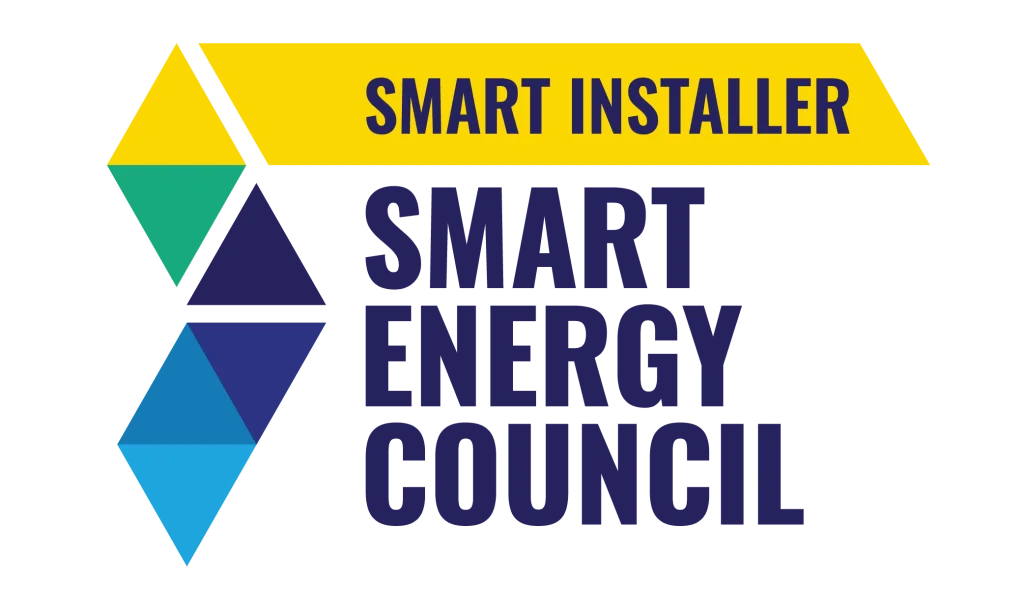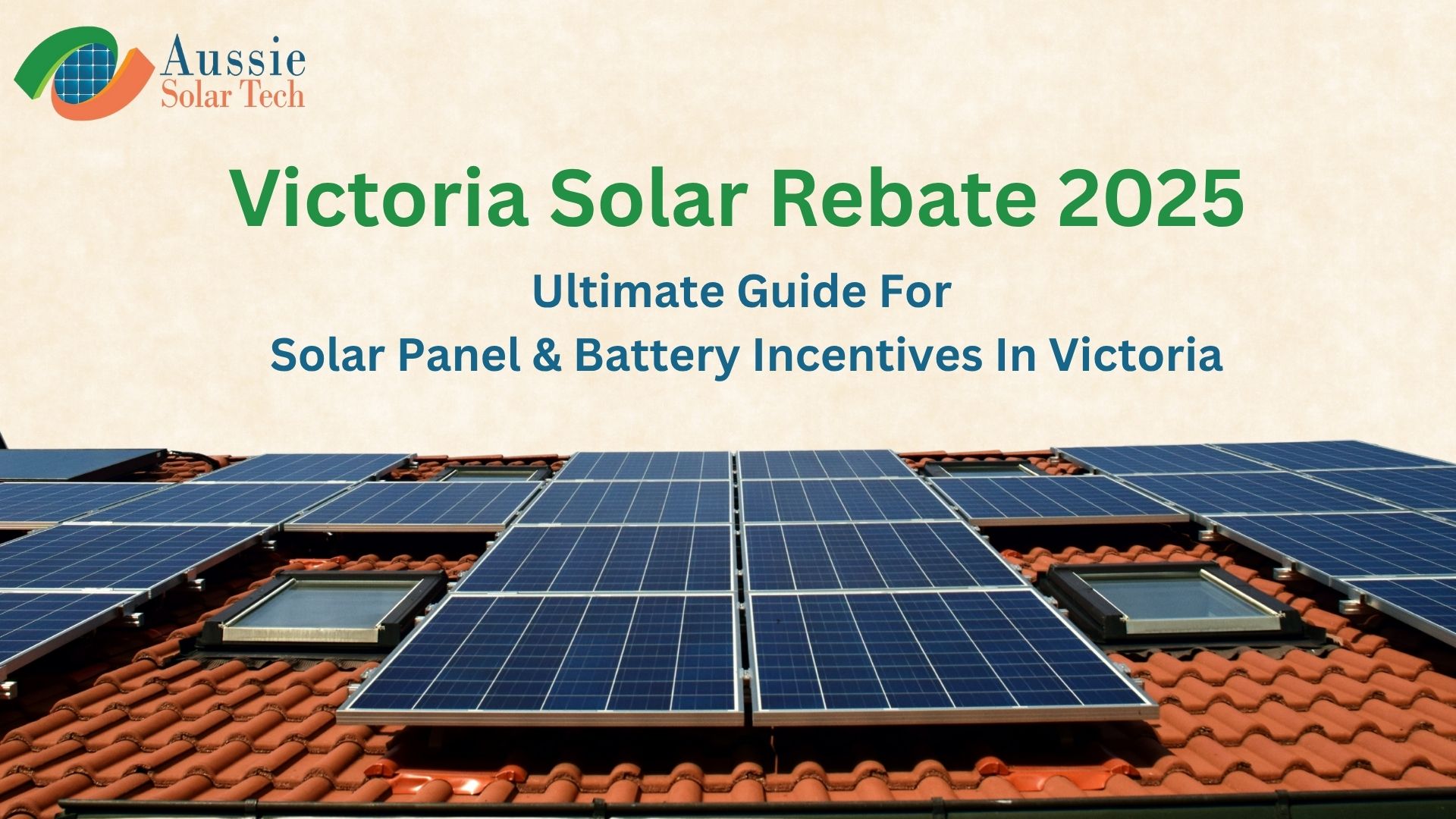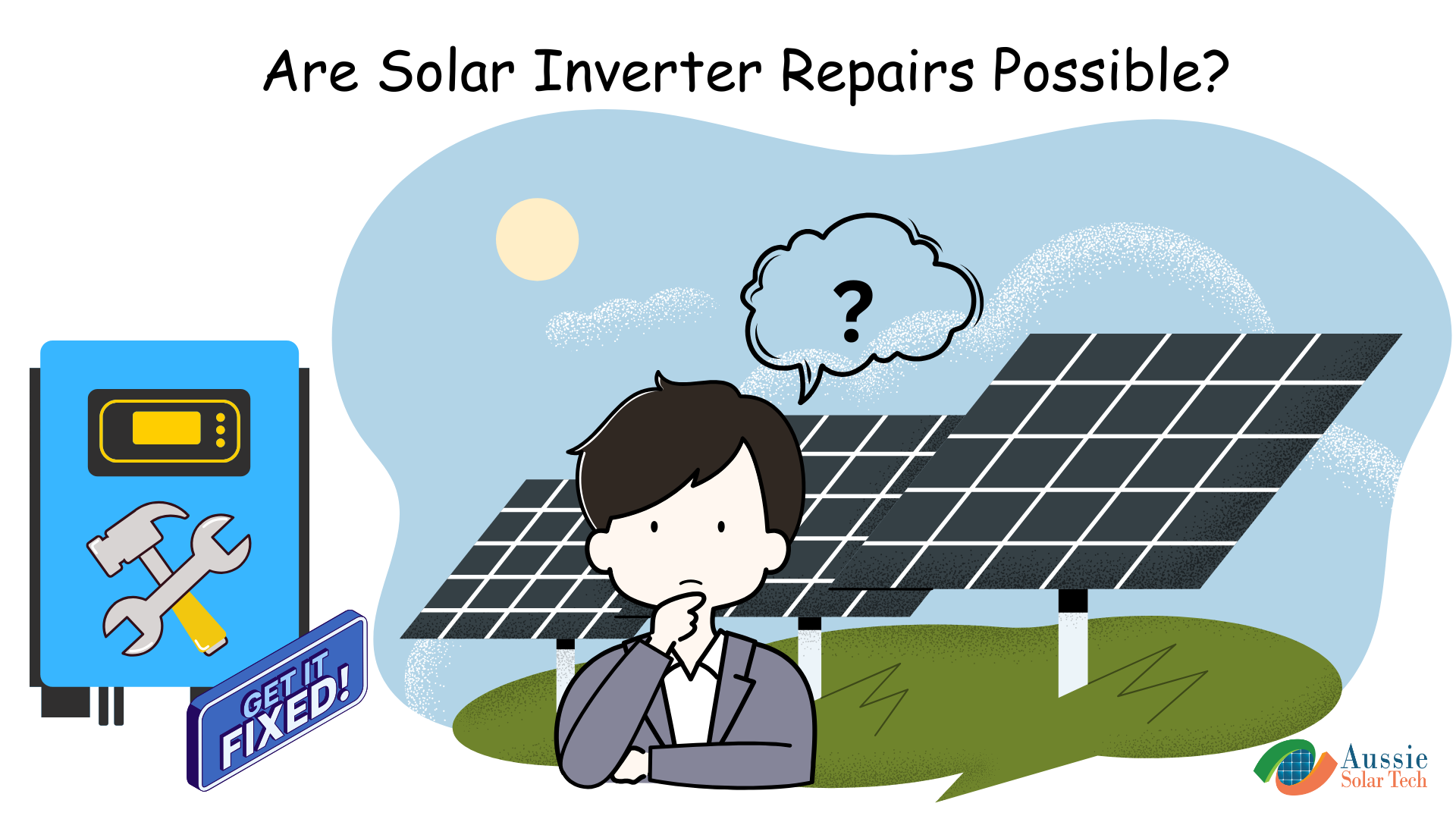Solar Roof Tiles vs Solar Panels: Costs, Benefits and What Do You Actually Need in Australia?
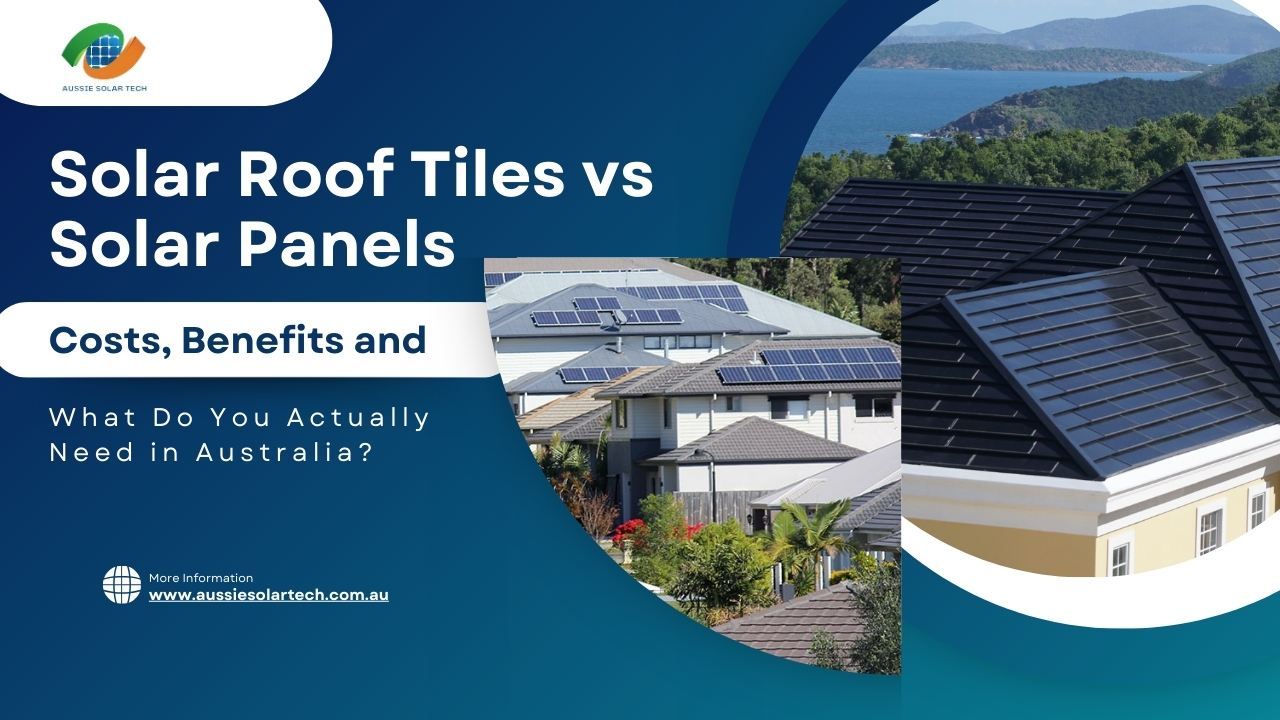
In This Article
ToggleAs Australia moves towards renewable energy, many homeowners are comparing solar roof tiles vs solar panels to find the best option to meet their electricity needs. While both solar roof tiles vs solar panels technologies use the sun’s energy to reduce energy bills and carbon footprints, there are some differences between them when it comes to design, cost, how they work and installation requirements. In this article, we will explore the key differences, how they work, pros and cons, and overall value of each solar solution so you can make an informed decision.
Solar Roof Tiles vs Solar Panels: Key Differences
| Feature | Solar Roof Tiles | Solar Panels |
| Installation | Complex and time-consuming | Quicker and easier |
| Cost | 2–3 times more expensive | More affordable |
| Aesthetics | Seamless and modern | Bulkier, visible frames |
| Efficiency | Lower (10–20%) | Higher (15–22%) |
| Suitability for Retrofits | Best for new builds or roof replacements | Ideal for existing roofs |
| Maintenance | Can be harder and costlier | Easier and cheaper |
What Are Solar Roof Tiles?
Solar roof tiles, also known as solar shingles or building-integrated photovoltaics (BIPV), are smooth solar cells that are embedded in roofing materials and work by replacing conventional roof tiles. Unlike traditional solar panels that are mounted on top of an existing roof, solar tiles are integrated directly into the roof structure, blending seamlessly with the roofline. These tiles function like traditional roofing materials while generating electricity from sunlight, offering a durable and aesthetically pleasing alternative to standard solar installations.
Key Features of Solar Roof Tiles:
Integrated Design
Solar roof tiles are typically designed to blend in with the existing roofing materials. Unlike large solar panels, they are integrated into the roof to form a natural part of the roof, giving the home a sleek, modern, and aesthetically pleasing look.
Energy Generation
Each tile contains photovoltaic cells that convert sunlight into electricity and can be connected to the grid, allowing you to use the electricity you produce for your own needs or sell excess electricity to the utility company.
Durable and Weather-Resistant
Solar roof tiles are made of toughened glass or high-strength composite materials. Which can withstand adverse weather conditions such as heavy rain, hail, snow and strong winds.
This makes them reliable for long-term use.
Dual Functionality
Solar roof tiles serve two purposes.
1. They generate solar energy.
2. They also act as a protective roofing material.
So you not only get electricity but you also get a strong and reliable roof.
Modular and Custom Fit
Solar roof tiles are modular, meaning they can be installed in a variety of configurations or sizes to match the size and shape of your roof. Whether you want to cover your entire roof or just a section, the system can be tailored to your needs.
Low Maintenance
Once installed, solar roof tiles require no maintenance. They are designed to last for years without frequent cleaning or servicing, making them a hassle-free option for a homeowner.
Smart Monitoring
Many solar roof tile systems come with monitoring software that allows you to track your energy production and consumption in real time. This helps you understand your usage habits and optimize your energy efficiency.
Battery Compatibility
Solar tiles can be integrated with home battery storage systems like the Tesla Powerwall, which stores excess electricity generated during the day and uses it at night or during power outages.
Eco-Friendly
Some manufacturers use recyclable and sustainable materials to make solar roof tiles. This makes them a greener alternative to traditional roofing and also helps reduce carbon emissions by relying on clean solar energy.
Long-Term Investment
Installing solar roof tiles can increase the value of your property and significantly reduce your electricity bills over time. Although the initial cost may be higher than a regular roof, the long-term savings and energy independence make it a wise financial decision.
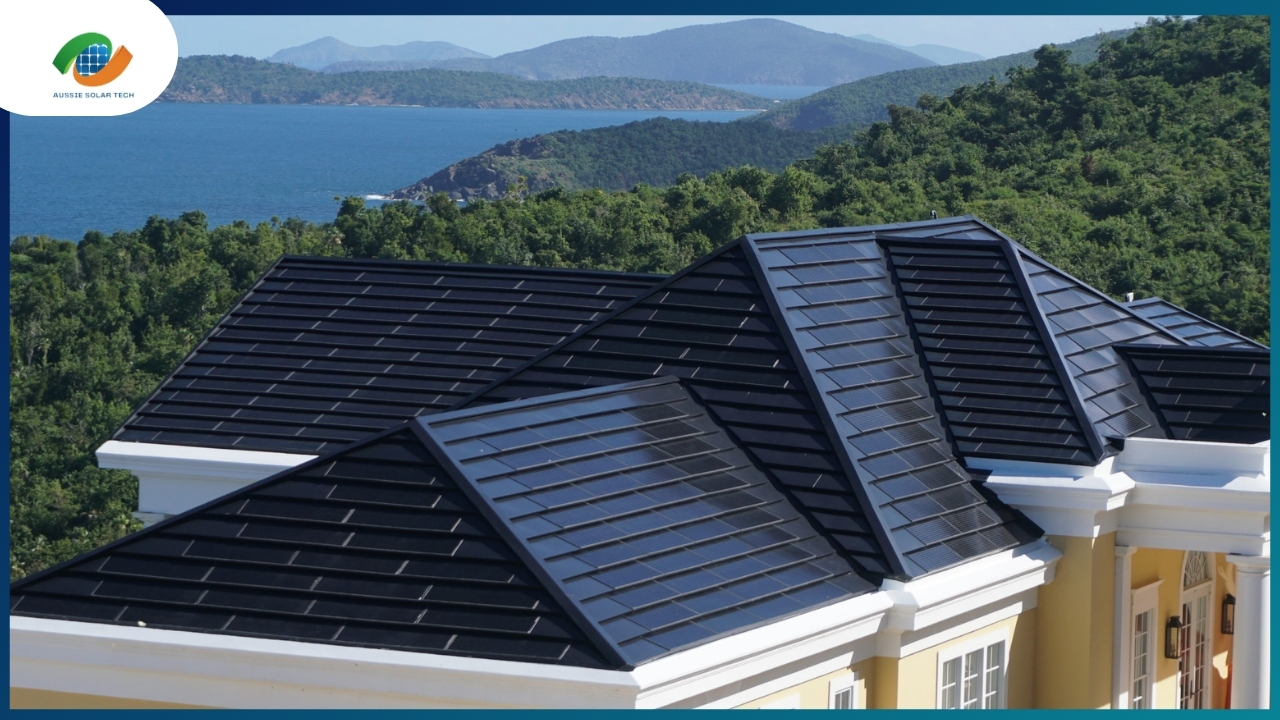
How Do Solar Roof Tiles Work?
When sunlight falls on the tiles, photovoltaic (PV) cells absorb solar energy and produce direct current (DC). This DC electricity is sent to an inverter, which converts it into alternating current (AC), the type of electricity used in homes. The electricity generated is stored in battery systems to power household appliances. It can then be sent back to the electrical grid for credit through net metering. Since the solar cells are built into the roof material, the system provides both weather protection and clean energy production in a seamless, integrated design.
What Are Solar Panels?
Solar panels are mounted systems installed over existing rooftops. These are the most common and cost-effective solar solutions in Australia. Made from crystalline silicon, they offer high efficiency and a proven track record in solar energy production.
Key Features of Solar Panels:
High Efficiency
Traditional solar panels, especially the monocrystalline type, are known for their high energy conversion efficiency. They convert a significant portion of sunlight into electricity, making them ideal for rooftop installations or large-scale deployments.
Proven Technology
These panels have been in use for decades. Which is backed by well-established research and performance data. Their reliability and long track record make them a trusted choice for solar power generation.
Cost-Effective
Compared to newer solar technologies like solar roof tiles, traditional solar panels are generally more affordable. Wide availability and a competitive market have helped drive costs down significantly over the years.
Modular Design
Traditional solar panels come in standard sizes. These can be combined into different arrays to meet different energy needs. Whether it is a small home or a large commercial building, the system can be easily scaled up or down.
Easy Installation
These solar panels can be installed on rooftops, open fields, small items, and even pole structures. Installation is easy, and there are many experienced professionals available to perform the job efficiently.
Durability and Longevity
Most solar panels come with a warranty of 25 years or more. They are built to withstand tough weather conditions, including heavy rain, strong winds, and high temperatures.
Wide Compatibility
Solar panels can be easily connected to inverters, battery systems, and grid-tie setups. They are compatible with a variety of solar accessories and technologies.
Low Maintenance
Once installed, they require minimal maintenance. Occasional cleaning and routine checks are usually sufficient to keep the system running efficiently.
Performance Monitoring
Many systems include performance monitoring tools that help users track energy production, identify errors, and optimize usage. This ensures consistent energy production and quick troubleshooting.
Environmental Benefits
Solar panels generate clean, renewable energy. By reducing reliance on fossil fuels, they help reduce greenhouse gas emissions. Contribute to a more sustainable future.
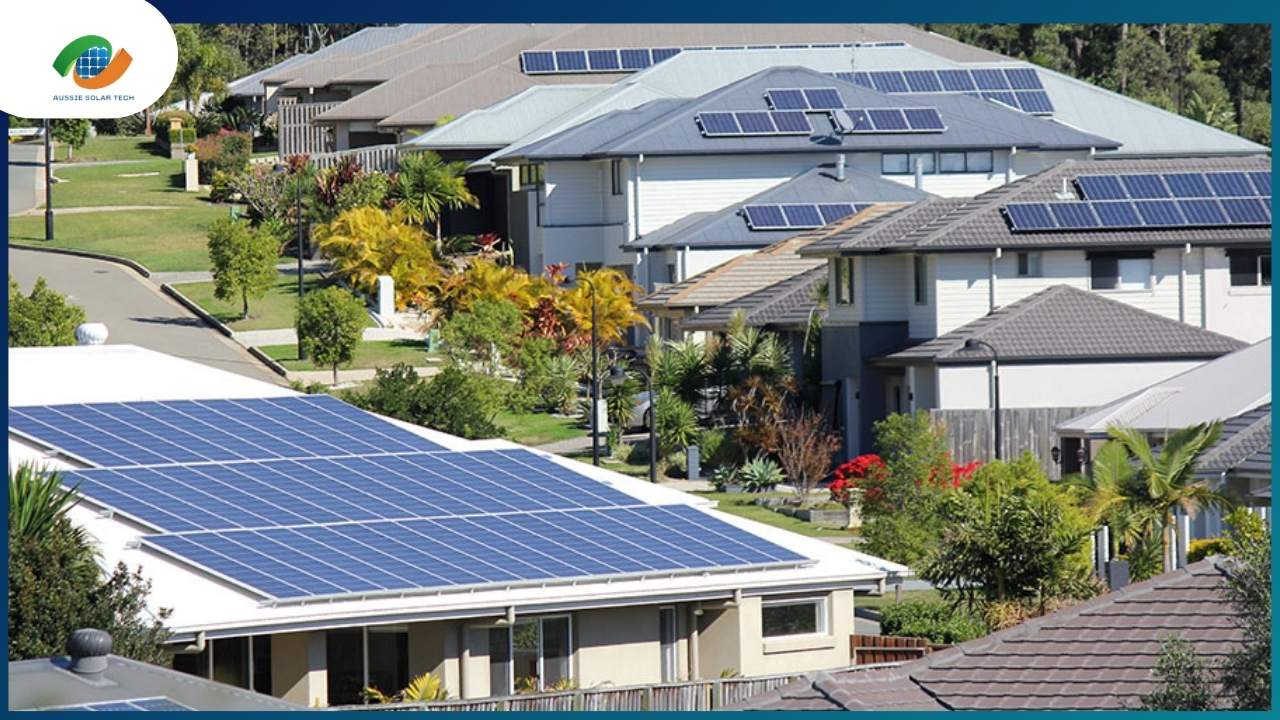
How Do Solar Panels Work?
Solar panels, like solar roof tiles, also use sunlight to generate DC electricity directly from PV cells. This DC electricity is then sent to an inverter, which converts it into alternating current (AC) that can be used to power homes and appliances. If the system produces more electricity than needed, the excess can be stored in batteries or sent back to the grid, depending on the setup.
Cost Comparison Between Solar Roof Tiles vs Solar Panels (2025 estimates)
The table below shows the cost comparison between solar roof tiles vs solar panels (upfront, before rebates), net cost after Small-Scale Technology Certificate (STC) rebates, and other factors.
We use representative sizes: ~6 kW for residential homes and ~50 kW for small commercial systems. All values are approximate (AUD) and include installation but exclude batteries.
New South Wales (Sydney)
| System / Brand | Tractile Solar Roof | SunPower Panels |
| 6–7 kW Residential | ~$55k for 4 kW (installed, after STCs)
(⇒ est. $80–100k for ~6 kW). |
~$13k extra for panels (10 kW example); 6 kW system ≈$8–10k installed (premium). STC rebate ≈$1,800 (55 STCs). |
| Commercial (50 kW) | Theoretical (large roof); no market data; likely similar per kW to residential roof. | ~$70,000+ (premium 50 kW; panels only ~$40k + install); STCs ≈$2,800. |
| Rebate (STCs) | – (none) | Yes (~$1,800 for 6–7 kW). |
| Maintenance (est.) | Roof+tile inspection (~$200/yr); flush hot-water tank ($100/yr). Tile warr. 25y, system 30y |
premium inverter ~$2000 at ~10 yrs) SunPower warr. 25y. |
Melbourne
| System / Brand | Tractile Solar Roof | SunPower Panels |
| 6–7 kW Residential | As NSW: ~$80–100k installed (6 kW). No STCs. |
$6k+ premium (6 kW): e.g. ~$1,200/panel × 22 panels ≈$26k installed Rebate ≈$1,800. |
| Commercial (50 kW) | N/A (possible but untested). | ≈$75,000+ (premium) incl. STCs. |
| Rebate (STCs) | – | Yes (≈$1.8k for 6 kW). |
| Maintenance | See NSW (30y system warr) | See NSW. |
| State incentive | None. | rebate $1,400. |
Queensland (Brisbane)
| System / Brand | Tractile Solar Roof | SunPower Panels |
| 6–7 kW Residential | ~$80–100k (6 kW); 4 kW was $55k after STCs. No STCs. | $6k+ premium (similar to VIC). Rebate ≈$2,000 (60 STCs). |
| Commercial (50 kW) | N/A. | $70–80k (premium 50 kW). |
| Rebate (STCs) | – | Yes (~$2,000) |
| Maintenance | As NSW. | As NSW. |
| State incentive | Same. | Same. |
Key: STC rebate assumes current values (~$36/STC) in each state (solar zones 2–3), applied to eligible systems. Tractile systems are assumed ineligible for STCs (no current approval). Maintenance is shown as an annual estimated cost for upkeep (cleaning, minor repairs).
Pros and Cons of Solar Roof Tiles vs Solar Panels
Solar Roof Tiles |
Solar Panels |
||
| ✅ Pros | ❌ Cons | ✅ Pros | ❌ Cons |
| Sleek, integrated look | Expensive upfront cost | Affordable and efficient | Visible hardware may affect aesthetics |
| Perfect for new home builds | Less efficient than panels | Widely available in Australia | May require structural reinforcement on older roofs |
| Durable and weather-resistant | Longer installation time | Compatible with most rooftops |
– |
Which Option Is Best for You?
Choose solar roof tiles if:
- You’re building a new home or replacing your roof
- Aesthetics are a high priority
- You have the budget for a premium solar product
Choose solar panels if:
- You’re retrofitting an existing home
- You want a cost-effective, proven solution
- Maximising efficiency and ROI matters to you
If you are confused about which one to choose, talk to our experts now.
Final Thoughts
When it comes to solar roof tiles vs solar panels, there is never a clear-cut answer. It will depend on your preferences, your budget, aesthetics, and long-term energy goals. While solar tiles provide a stylish, integrated solution, traditional solar panels are still popular with most Australian households due to their cost-effectiveness and performance.

Shah Tarek is a Solar Energy Consultant with 10 years experience in solar system design and solar consultancy field at Australia. He is now a Director, Operation & Consultancy Division at Aussie Solar Tech, a leading Australian solar retailer and installer. Here he is writing informative and engaging solar content that educates the community on the benefits of solar power. His work supports Aussie Solar Tech’s mission to promote sustainable energy solutions and foster a greener future for Australia.




